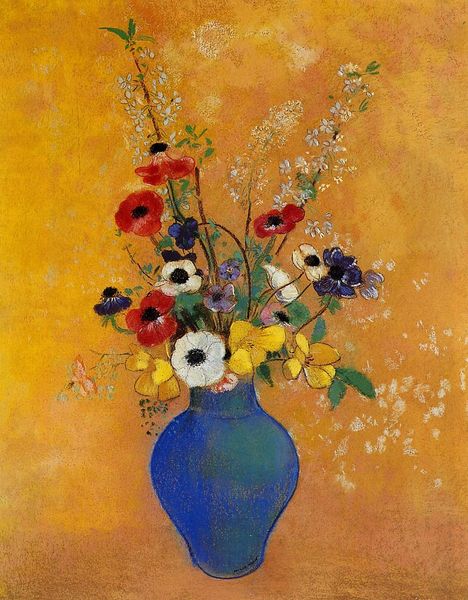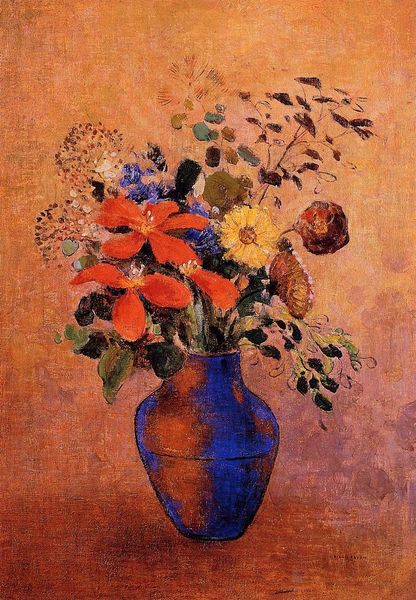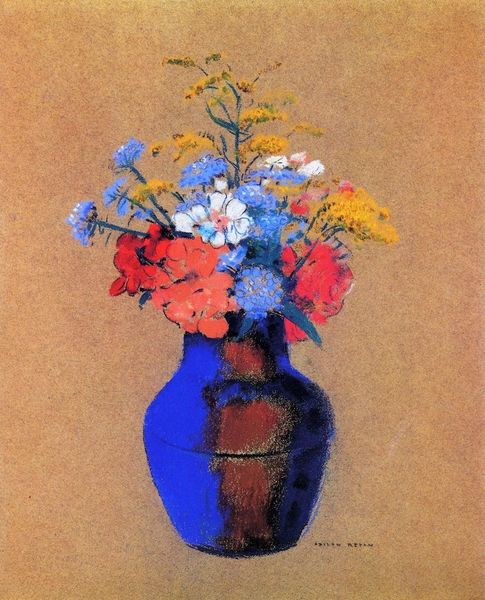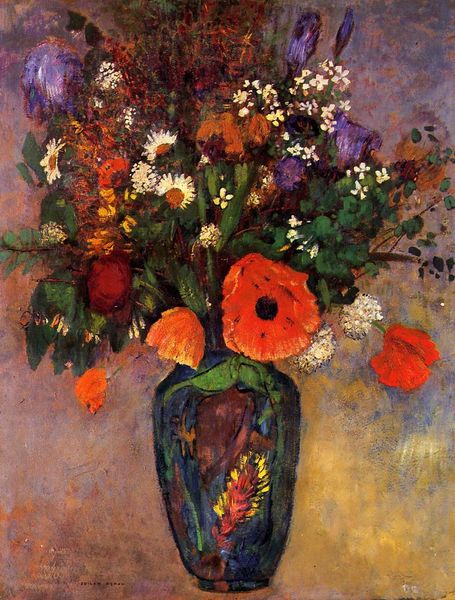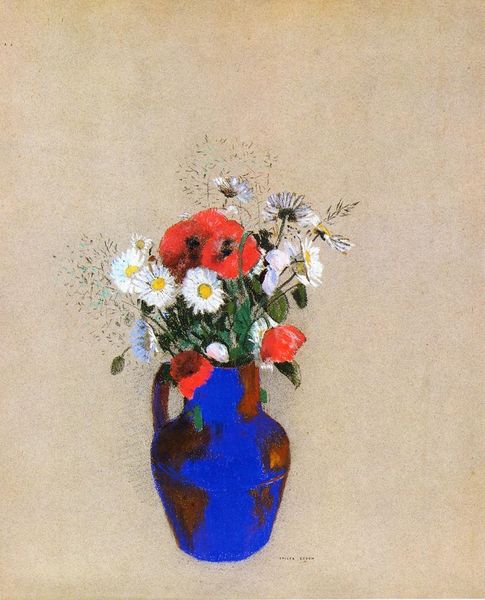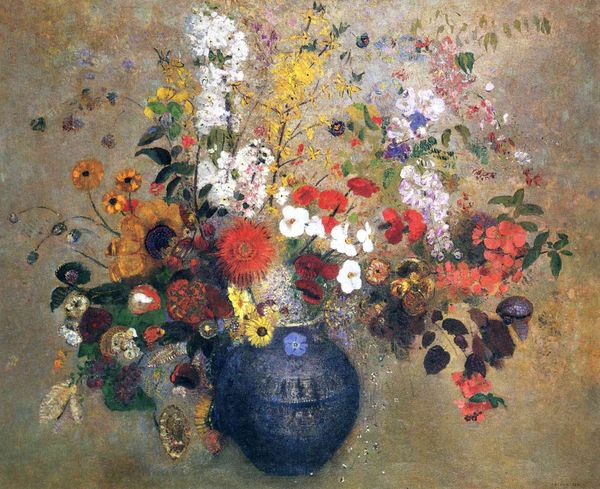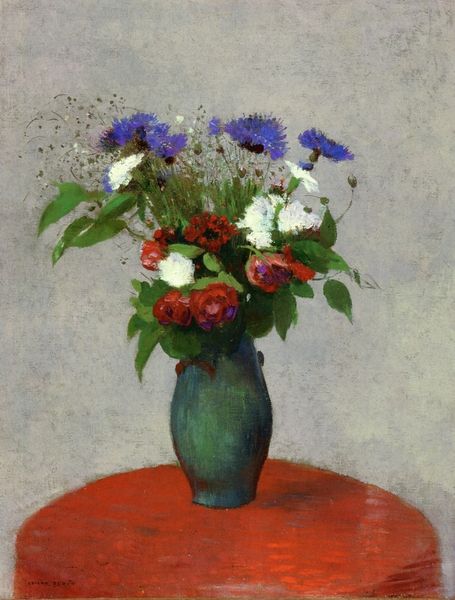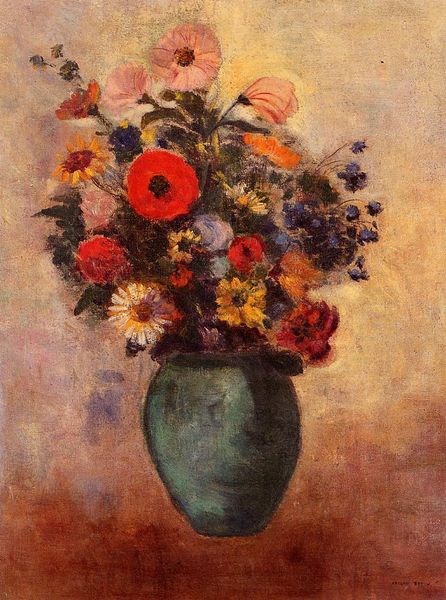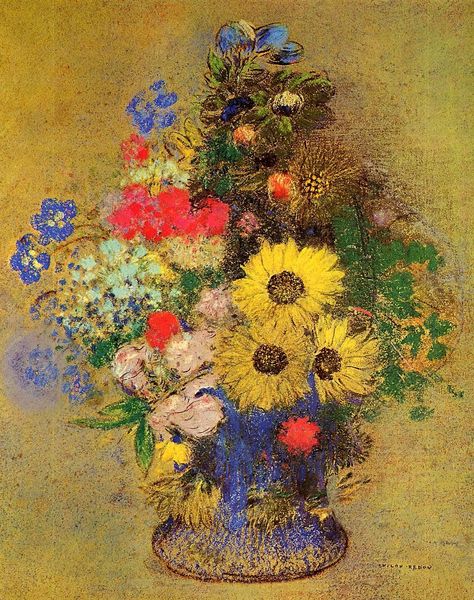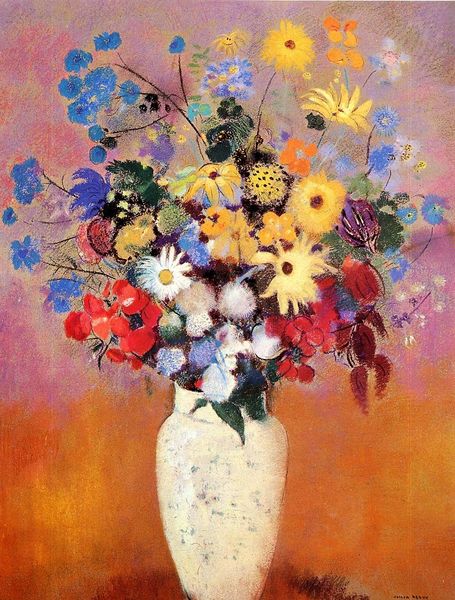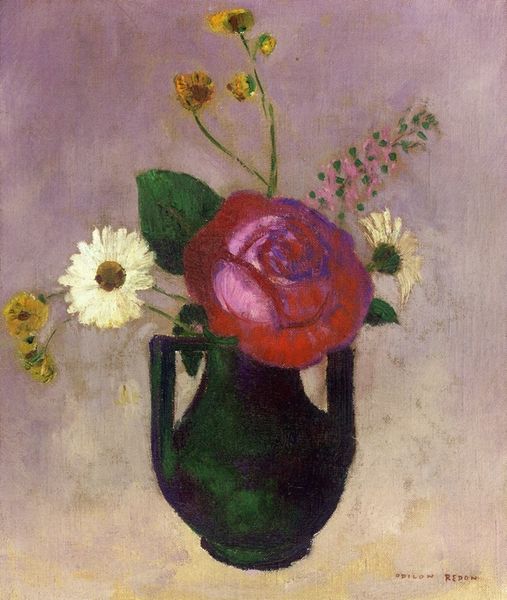
Dimensions: 72 x 60 cm
Copyright: Public domain
Curator: Immediately I am struck by the sheer joyousness radiating from this piece. The way the colors play together... it’s like a summer afternoon distilled into a painting. Editor: We’re looking at Odilon Redon’s “Bouquet of Wild Flowers,” created around 1910. Redon was a master of color and a key figure in the Symbolist movement. This is an oil painting and gouache artwork created with painstaking attention to craft, the sort of art he became well-known for later in his career. It is currently held in a private collection. Curator: You know, looking at it, I can almost feel the texture of the paper. See how the gouache sits so delicately on the surface? He really understands the materials. Editor: Redon's departure from traditional oil techniques involved layering gouache to achieve an effect often described as velvety or dreamlike. He was fascinated by the process of alchemy turning base metal into gold – or, in this case, mundane pigments into transcendent light. Curator: Yes! Transcendent. That’s the perfect word. And that deep blue vase – it grounds the whole piece, like a source of life. It reminds me, too, of how flowers in their arrangements served the same purpose in peoples' lives as simple manufactured goods do today: a chance to signal refinement. Editor: There's an interesting contrast in the context of Redon's time: he was creating during a period of intense industrialization, but choosing to depict these natural, delicate forms. The brushstrokes look hasty, almost anxious. I'd love to better understand that tension in the means of production. Curator: Exactly. Perhaps the anxiety reveals itself in a very modern sense – like it’s a premonition of climate concerns we hold about nature today. Editor: Perhaps Redon was suggesting that the industrialization of flowers as purely commodities also threatened more than just the object's "purity", so to speak, but something much greater too, maybe what is good in the very soul. Curator: Hmm. What a vibrant soul it has, indeed. It’s one of those pieces that makes you breathe a little deeper, appreciate the small, beautiful things. Editor: Agreed, there is a lovely use of color to be analyzed further with each glance. It feels we barely scratched the surface of Redon's process today, perhaps to return for another study will be required.
Comments
No comments
Be the first to comment and join the conversation on the ultimate creative platform.
